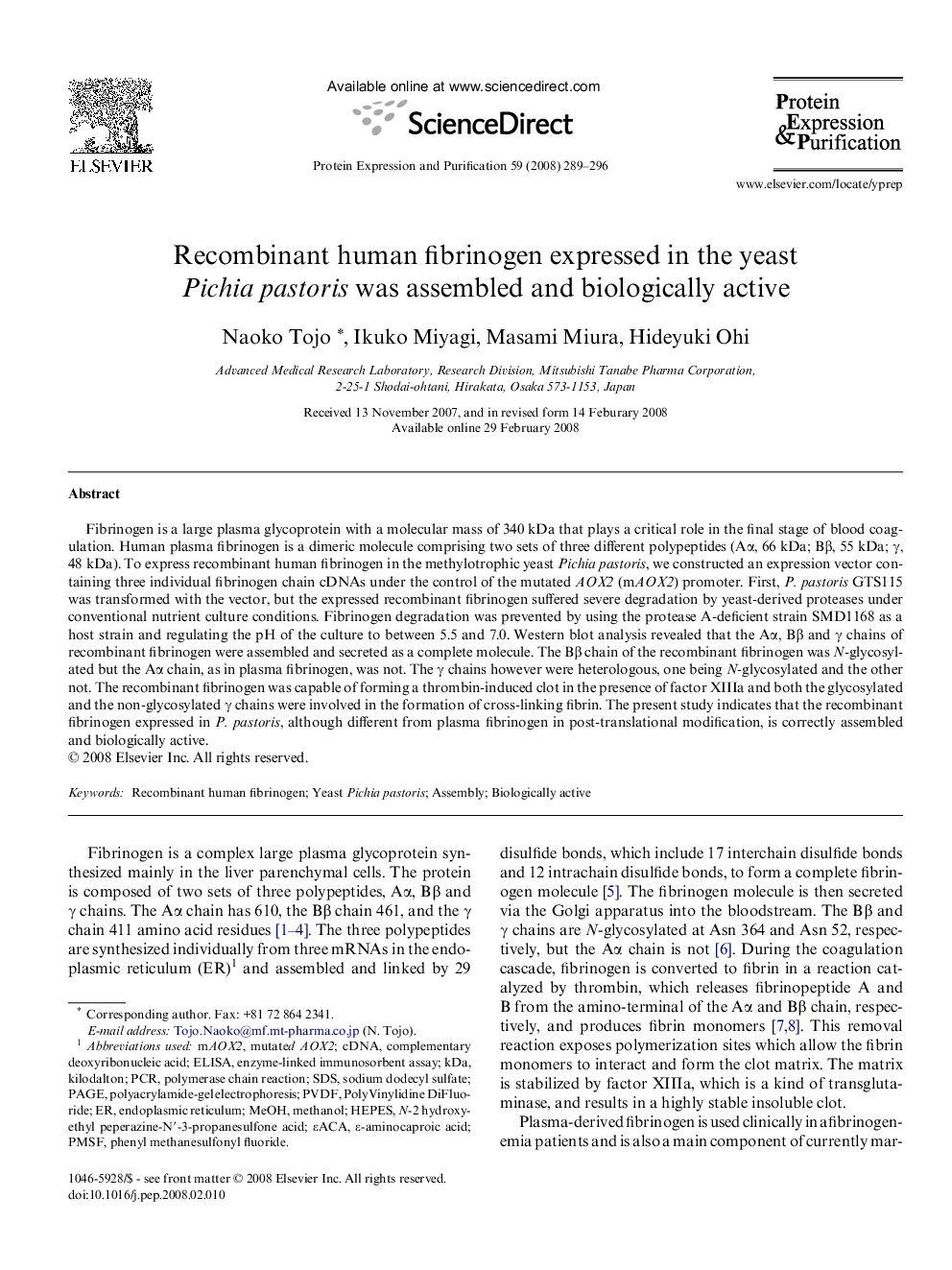| Article ID | Journal | Published Year | Pages | File Type |
|---|---|---|---|---|
| 2021630 | Protein Expression and Purification | 2008 | 8 Pages |
Fibrinogen is a large plasma glycoprotein with a molecular mass of 340 kDa that plays a critical role in the final stage of blood coagulation. Human plasma fibrinogen is a dimeric molecule comprising two sets of three different polypeptides (Aα, 66 kDa; Bβ, 55 kDa; γ, 48 kDa). To express recombinant human fibrinogen in the methylotrophic yeast Pichia pastoris, we constructed an expression vector containing three individual fibrinogen chain cDNAs under the control of the mutated AOX2 (mAOX2) promoter. First, P. pastoris GTS115 was transformed with the vector, but the expressed recombinant fibrinogen suffered severe degradation by yeast-derived proteases under conventional nutrient culture conditions. Fibrinogen degradation was prevented by using the protease A-deficient strain SMD1168 as a host strain and regulating the pH of the culture to between 5.5 and 7.0. Western blot analysis revealed that the Aα, Bβ and γ chains of recombinant fibrinogen were assembled and secreted as a complete molecule. The Bβ chain of the recombinant fibrinogen was N-glycosylated but the Aα chain, as in plasma fibrinogen, was not. The γ chains however were heterologous, one being N-glycosylated and the other not. The recombinant fibrinogen was capable of forming a thrombin-induced clot in the presence of factor XIIIa and both the glycosylated and the non-glycosylated γ chains were involved in the formation of cross-linking fibrin. The present study indicates that the recombinant fibrinogen expressed in P. pastoris, although different from plasma fibrinogen in post-translational modification, is correctly assembled and biologically active.
